Computer-generated effects can either be a saving grace, or the fly in the ointment. For decades now, filmmakers have relied upon the technology to accomplish things that practical effects can't handle. However, some producers have started using CGI as a crutch, to the detriment of their films overall.
Sometimes, the most memorable and awe-inspiring scenes in movies are done with practical effects, instead of CGI. This forces directors to get creative when it comes to achieving a particular shot or vision, but in so doing, they bring authenticity, believability, and imagination to the work, and that's good news for everyone.
Updated on October 3rd, 2021 by Derek Draven: In the modern movie age, CGI isn't just a common tool used by filmmakers; it's practically a requirement in the age of superhero movies and blockbuster franchises like Star Wars and the MCU. The technology has evolved to the point where the lines between real and simulated are becoming increasingly blurry. Yet, some of the best effects in movies are accomplished through visual trickery or old-fashioned practical effects. All it takes is a dedication to classical craft, and some inventive and creative techniques to get the desired shot.
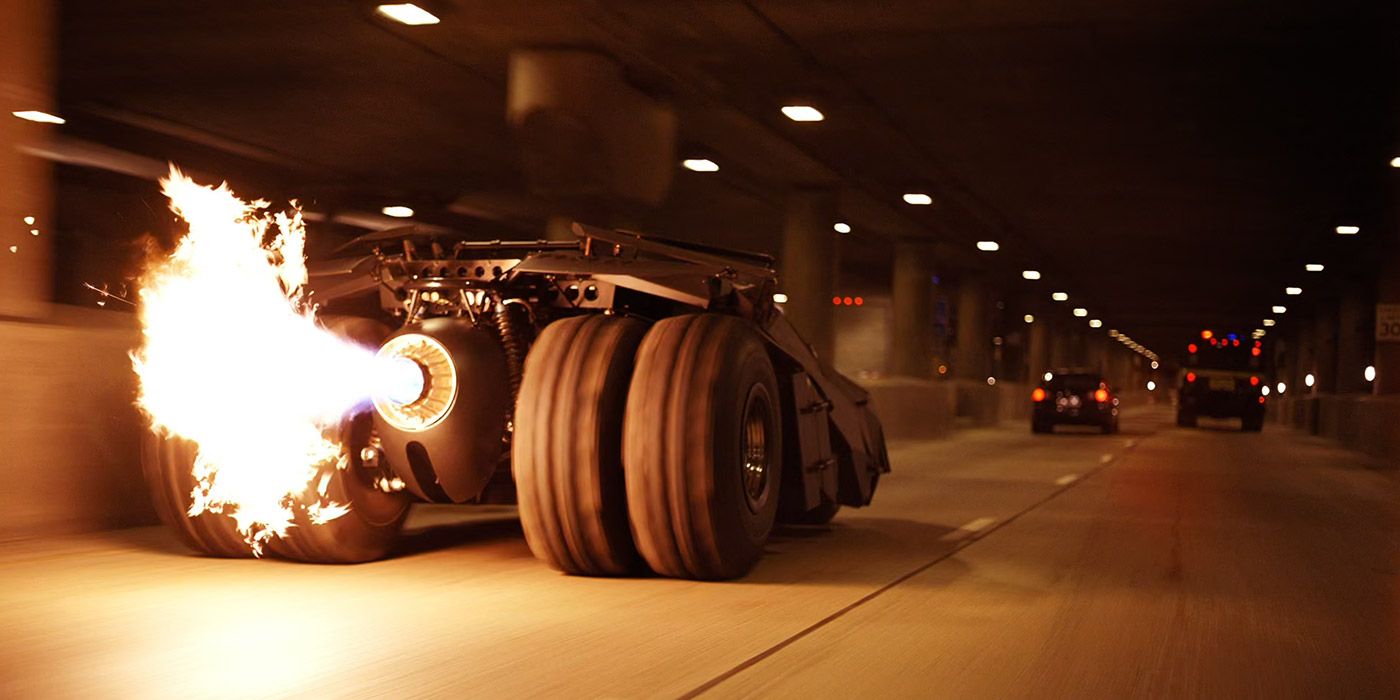
• Available to stream on HBO Max
There is so much wreckage in the IMAX-filmed car chase scene of The Dark Knight that it’s hard to believe that CGI wasn’t used. Often, production crews will create miniature sets when they need to film destruction of this magnitude, but Christopher Nolan opted for practical effects. To achieve authenticity, he closed down the streets of Chicago to film the scene.
The most impressive stunt of the entire sequence was the climatic flip of the garbage truck. The special effects crew accomplished this by building a steam piston mechanism inside the trailer, which provided the upward force needed to flip the monstrous truck and send it head over heels. It was this kind of quality that made The Dark Knight the ultimate Batman movie.
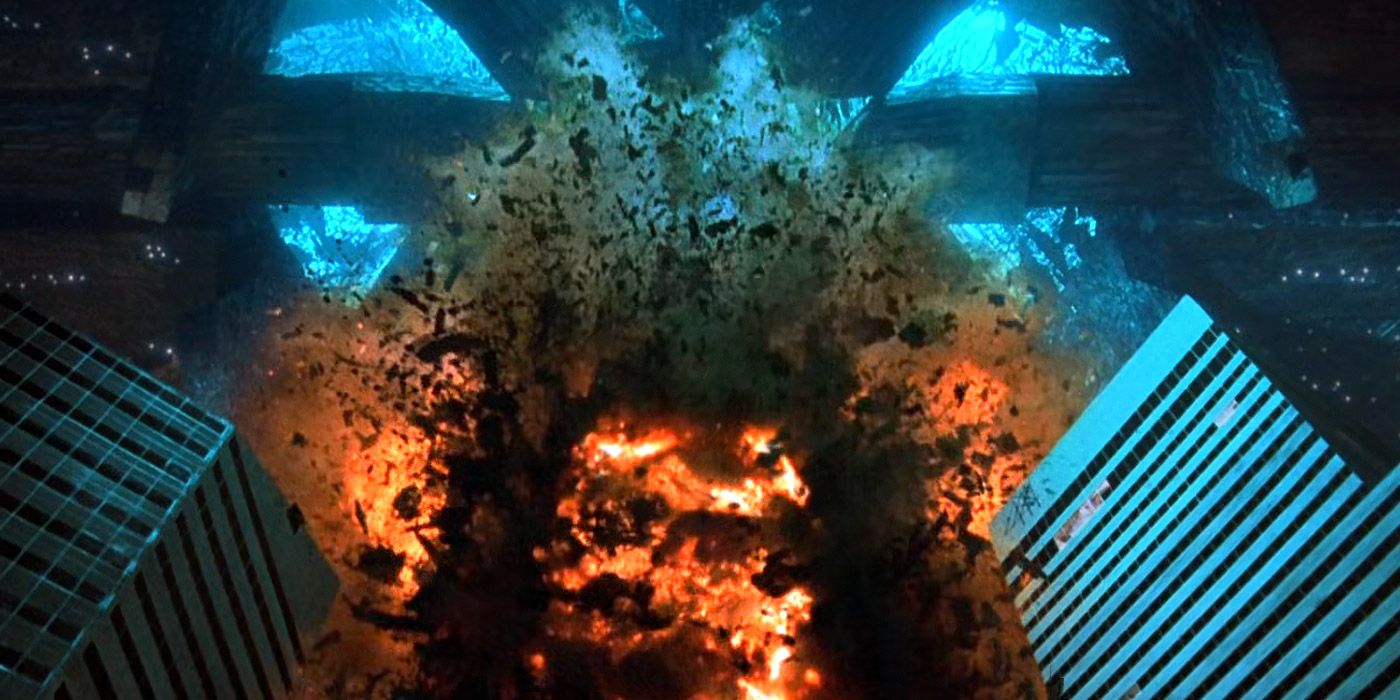
• Available to stream on HBO Max
As hard as it is to believe, no CGI was used in the sequence of Independence Day where the aliens obliterate New York City, L.A., and Washington D.C. A key indicator is the use of fire in the scene, which is far too realistic and authentic to have been created using the relatively primitive CGI techniques of the time.
To pull off the effect, the special effects crew built a model city and placed it on its side, calling it the “death chimney.” Pyrotechnics were placed along the bottom, with the camera pointing downward. When the building exploded, the fire shot upwards, creating a lateral effect.
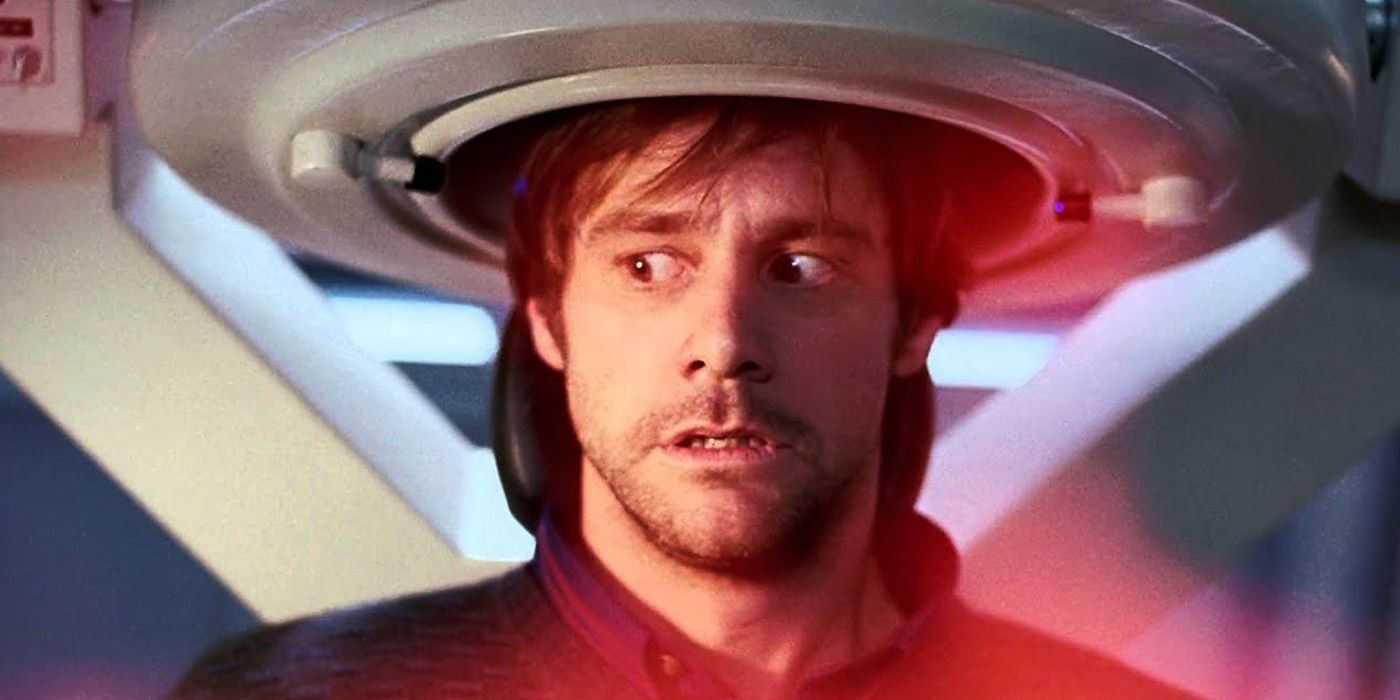
• Available to stream on Fubo
In Eternal Sunshine of the Spotless Mind, Joel Barish tries to have the memories of his girlfriend Clementine erased. In a kind of dream state, Joel then relives the memories of both he and Clementine as they are simultaneously wiped from his own. The memories are disjointed, with people and settings popping in and out at random moments.
Director Michael Gondry successfully created the surreal world of Joel's psyche through some pretty ingenious tricks. In one sequence, Joel walks in on himself talking to the doctor who was responsible for wiping his memories. The camera pans from Joel to the doctor, and then back to the other Joel in an instant. Drawing from his background in theater, Gondry actually had Carrey run to the other side of the set as quickly as possible, to simulate the effect.

• Available to stream on HBO Max
Christopher Nolan's ambitious historical retelling of the Dunkirk evacuation became one of the highest-rated WWII movies by critics, for a good reason. One area where he succeeded was the filming of the exciting and nerve-wracking dogfight sequences interspersed throughout the film.
Rather than go CGI for the sake, Nolan decided to procure some actual WWII-era planes and remote-controlled replica models that he could use to shoot in-world. This lent a real aura of authenticity to the movie's dogfighting scenes.
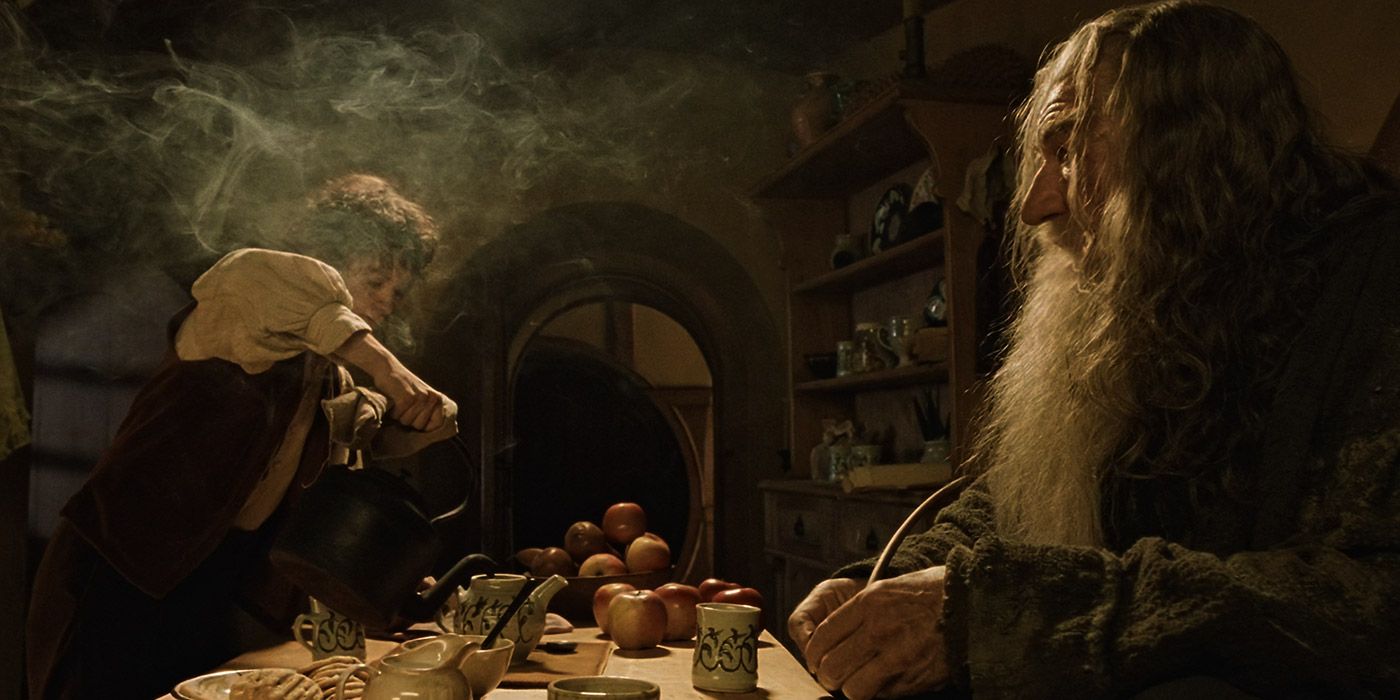
• Available to stream on HBO Max
Peter Jackson used a very old technique called "forced perspective" to get out of having to spend money on CGI effects for the Lord of the Rings trilogy. It's evident in many scenes featuring Hobbit characters alongside their human counterparts. To accomplish this technique, Jackson placed the Hobbits in the background of a shot, with human characters at the forefront.
It's a simple optical illusion made possible by the magic of the camera lens. Both actors appear to be facing each other and talking, but in reality, they're both staring off into their respective distances. The final shot looks seamless and natural and costs nothing to reproduce.
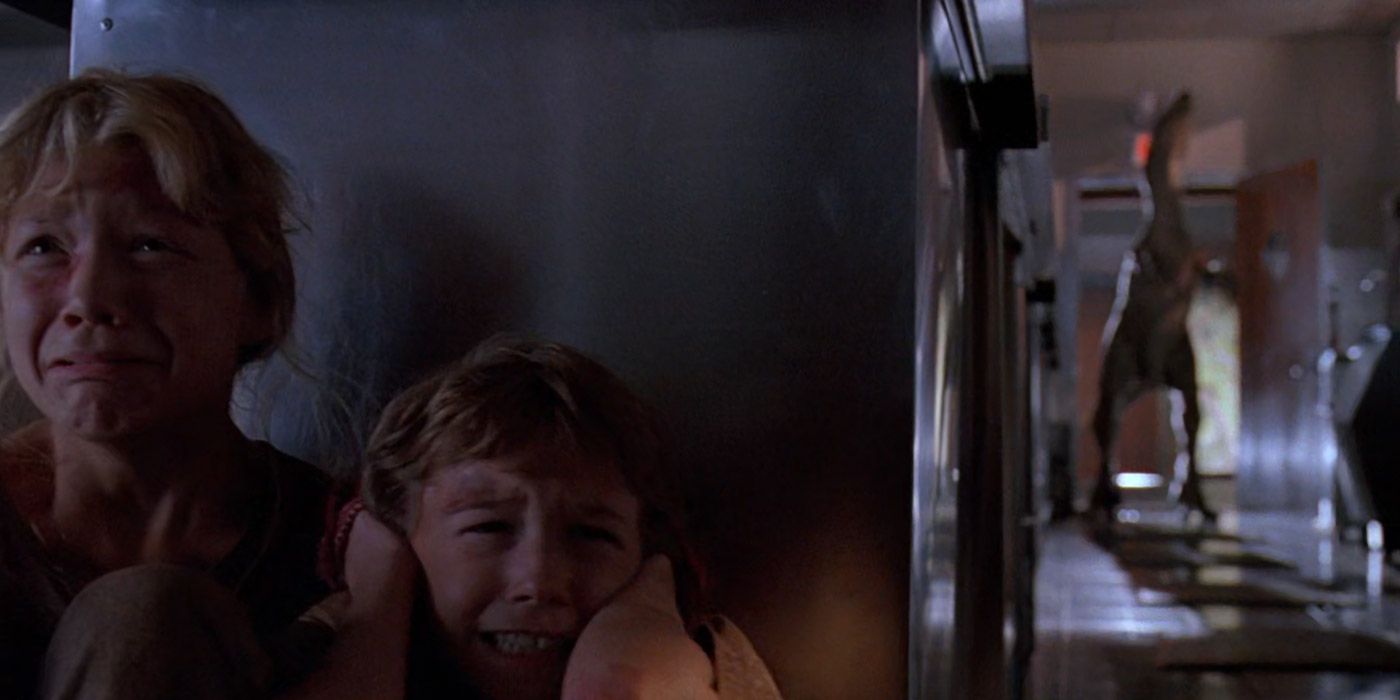
• Available to stream on HBO Max
The dinosaurs of Jurassic Park were a combination of CGI, animatronics, and a few stuntmen in rubber suits, depending on the scene being shot. Spielberg's team created Velociraptor suits, which appear during the infamous kitchen chase, one of the scariest Jurassic Park scenes to feature Raptors.
Stan Winston Studio supervisor John Rosengrant was the main Raptor suit performer. To create a realistic performance, Rosengrant studied Raptor behavior and imitated it onscreen. He worked with a personal trainer before shooting to ensure he could hold his signature hunting pose for long periods of time.
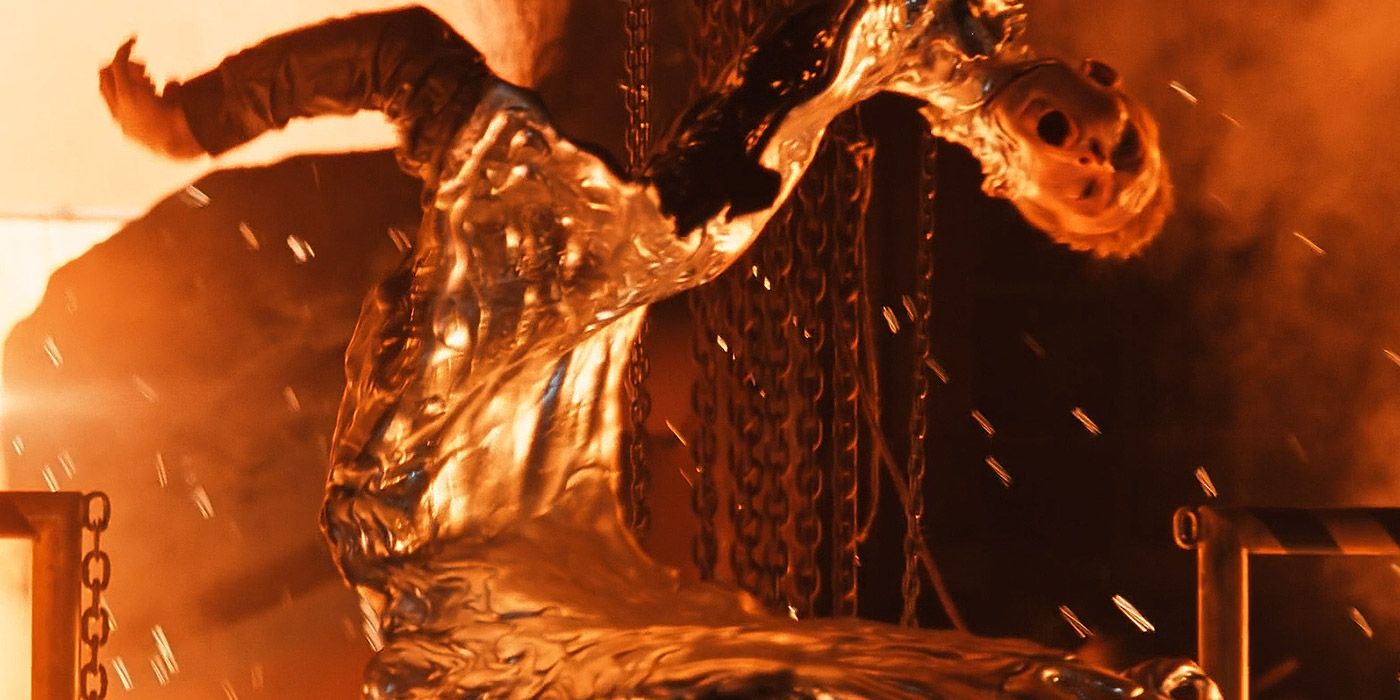
• Available to stream on Fubo
Following the success of implementing CGI into his ambitious sci-fi film The Abyss, James Cameron decided to have a go at a sequel to his most beloved franchise - The Terminator. The second film continued his use of practical on-set techniques and effects while injecting CGI to fill in the gaps as needed.
The deadly T-1000 was used to demonstrate one of the most impressive CGI scenes of the 1990s, but the final shot of him being blown up with a grenade was done quite differently. At first glance, it appears that the wrecked T-1000 model is a CGI character, but in reality, it's a life-sized animatronic puppet. The effect is extremely convincing.
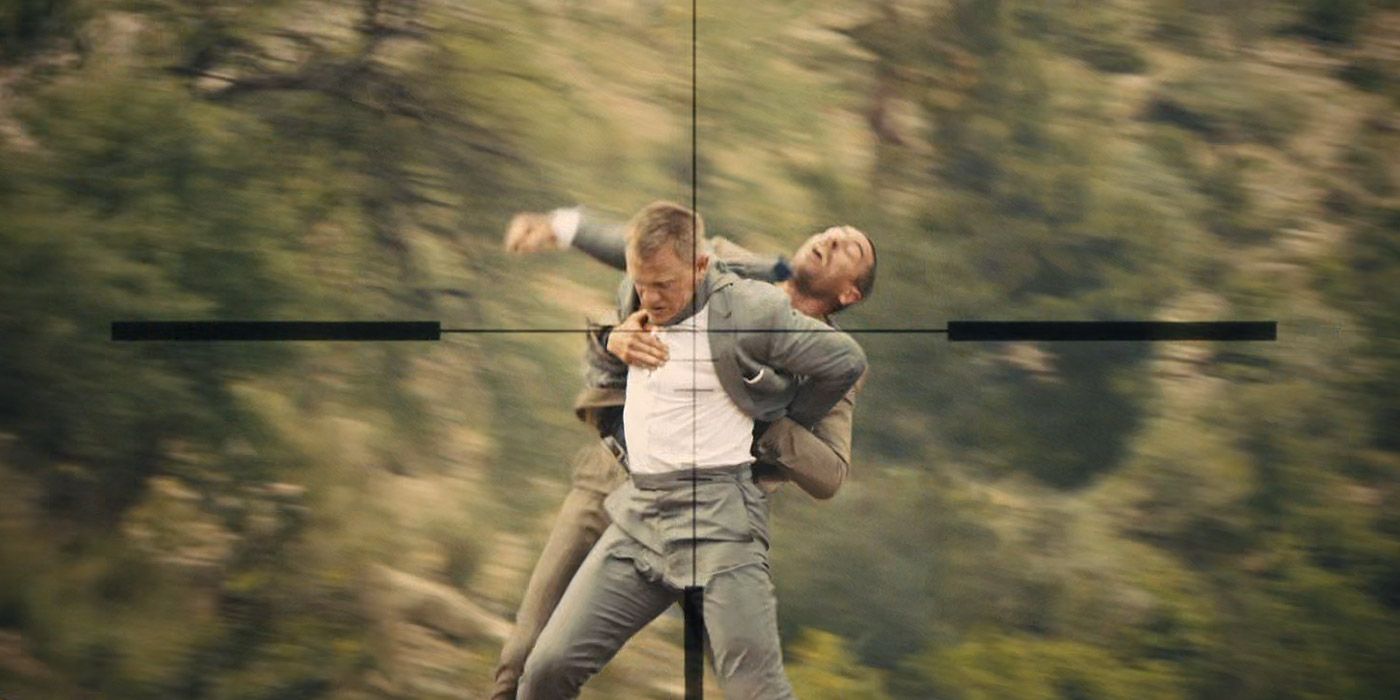
• Available to stream on Paramount+
007 films rarely utilize CGI except in the most extreme circumstances, and Skyfall is no different. Early in the film, Bond fights a mercenary on top of a train. Every jab, kick, and knockout is actually performed by the two men while the train is moving. The only thing preventing them from falling off the side is a wire about as thick as a human's index finger.
Later in the movie, a train smashes through the wall, and no CGI is used for that sequence, either. The filmmakers accomplished the effect by hanging the train laterally, then letting the force and weight of it blast through the wall. Bond is shown diving in front of the train during that scene, which was added in later during post-production.
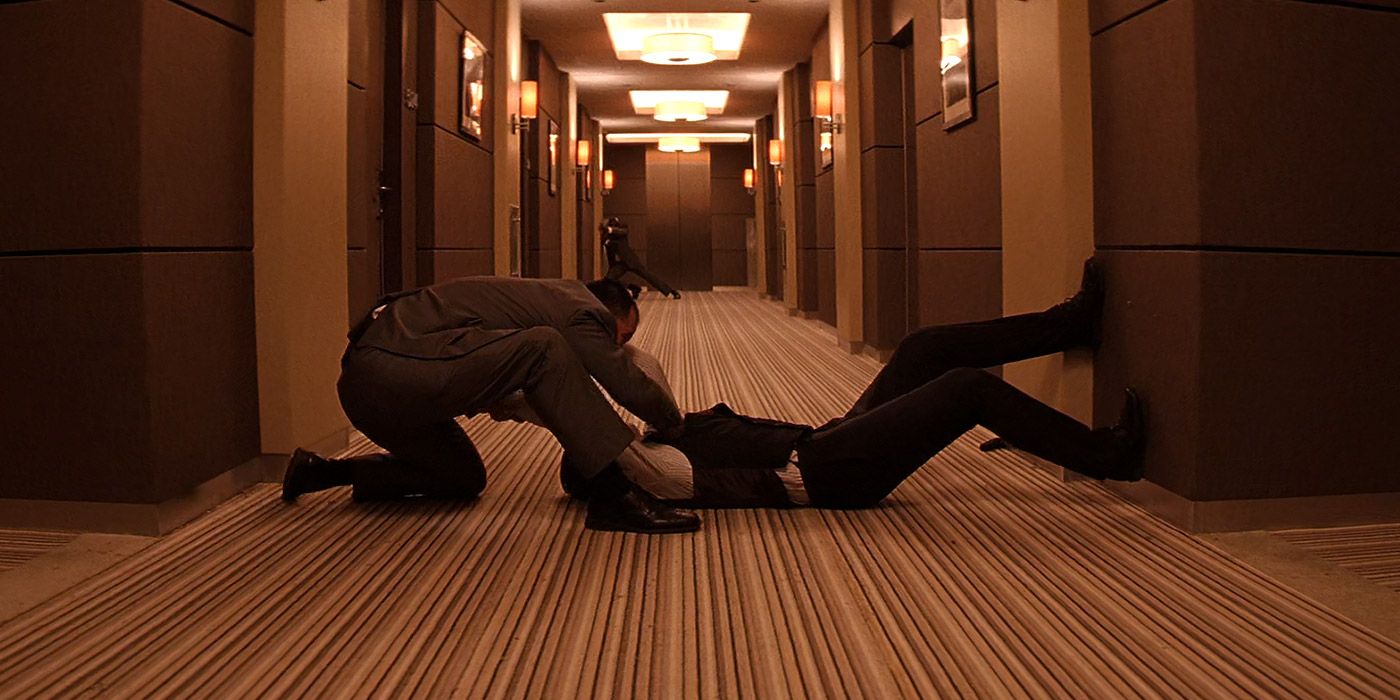
• Available to stream on HBO Max
Inception was a mind-bending movie in almost every way, but most of it was shot without a hint of CGI. To achieve the zero-gravity effect of the film's jaw-dropping hallway fight scene, a 100-foot rotating hallway was constructed in a London airplane hangar. The camera was locked down in the hallway when it was rotating, making the actors appear as if they were climbing walls and walking on the ceiling.
In another scene, water rushes through the windows of a castle as Leonardo DiCaprio watches. The crew fired 3,000 to 4,000 gallons of water into the windows from huge water cannons as DiCaprio stood there, soaked wet from the ordeal. Nolan proved, once again, that practical effects are far more effective than CGI in many circumstances.
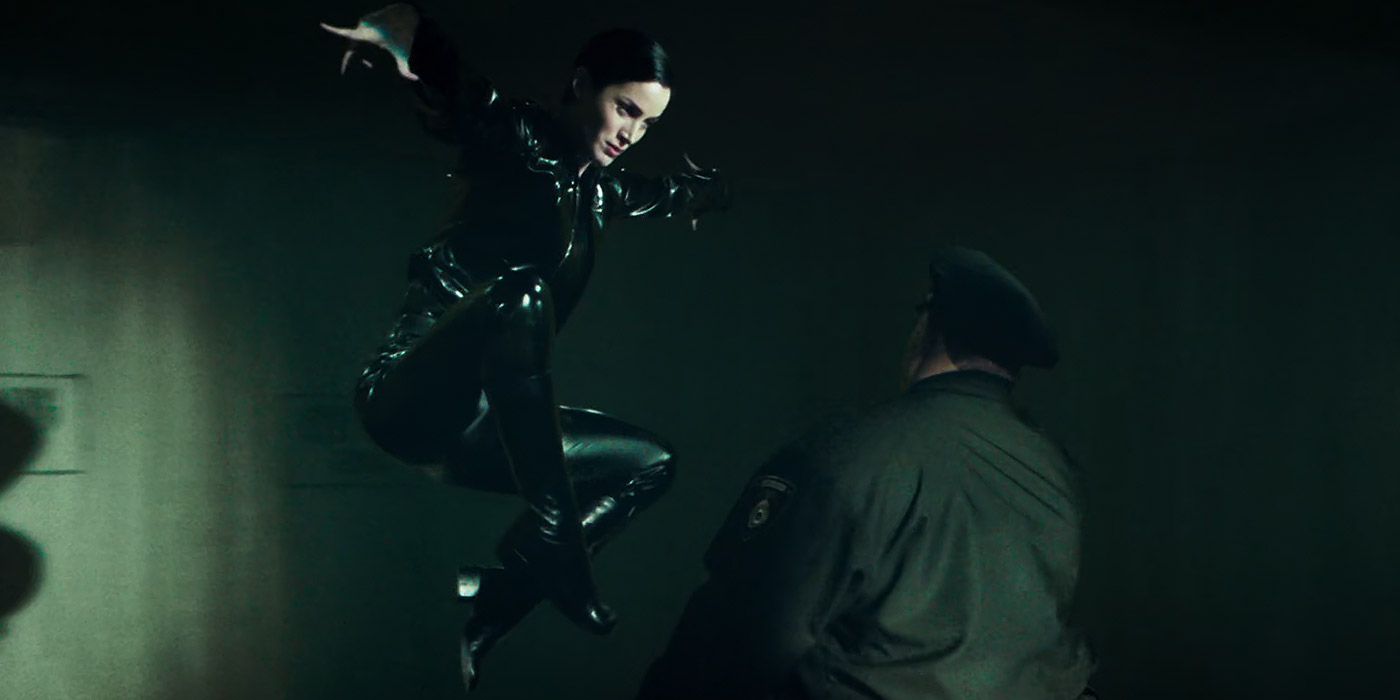
• Available to stream on HBO Max
The concept of bullet time was a unique one in 1999, and nobody had seen anything quite like it before. While the effect in The Matrix appears to be fully CGI to the naked eye, the reality is much more practical. It involved the use of stationary cameras set up in a specific placement chain to capture the movement of the scene as intended.
Once activated, the cameras would fire in succession, one after the other to create the rotating camera lens effect. While the backgrounds in these scenes were CGI rendered, the actual effect was done entirely with cameras. Clean-up techniques like interpolation were used to smooth out the sweeping camera effect.
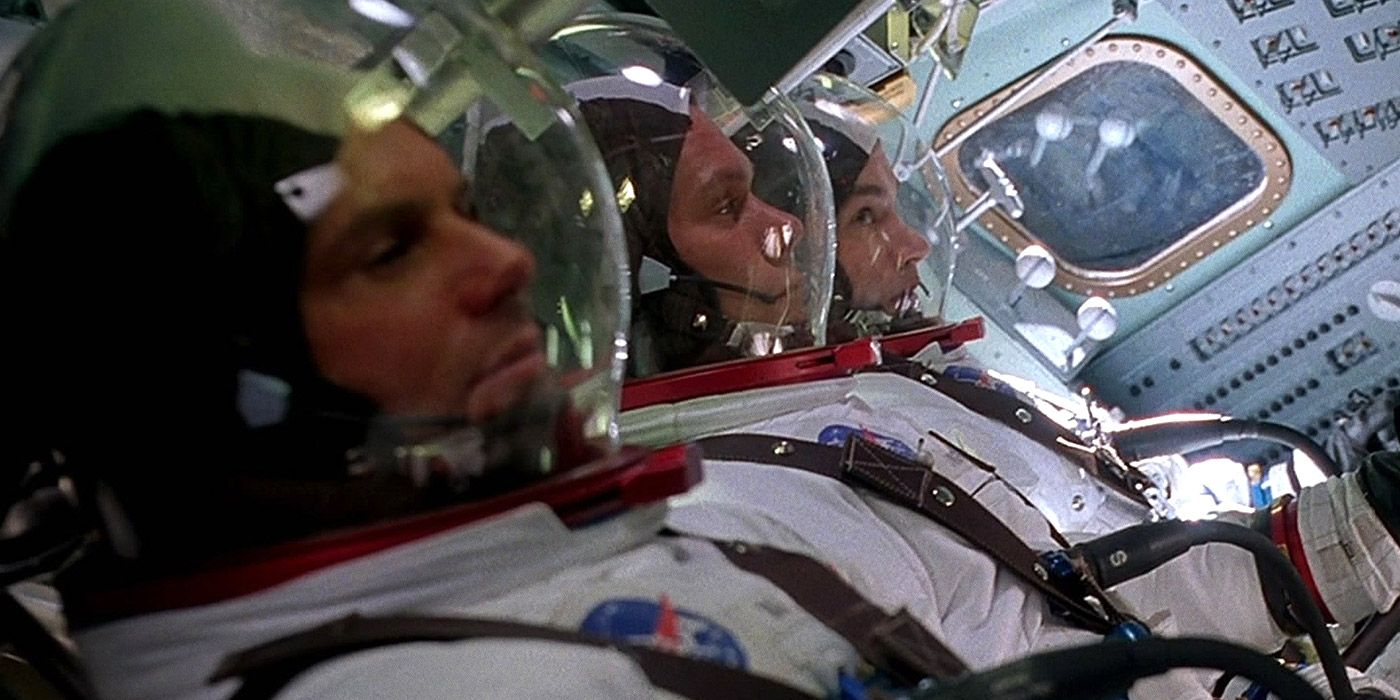
• Available to stream on Amazon Prime Video
Director Ron Howard took historical accuracy quite seriously in Apollo 13, but technical accuracy was just as important. Howard utilized NASA’s own KC-135 airplane during filming, which is used to train real astronauts. The aircraft simulates a zero-G environment through a series of parabolic arcs, which causes the ship to go up and down at super speeds. The aircraft is aptly nicknamed the “the Vomit Comet.”
Tom Hanks, Bill Paxton, and Kevin Bacon were placed inside of the KC-135 to film all of the weightless scenes, which comprise nearly half of the film. Bacon was not enthused to film in an actual weightless environment but caved after seeing the excitement of his co-stars. It took roughly 600 parabolic arcs, comprising almost four hours of weightlessness to complete all of the filming.

• Available to stream on Max Go
When filming his spy comedy film Confessions of a Dangerous Mind, director George Clooney used in-camera effects to create several seamlessly contained sequences. For example, in the scene where game show television producer Chuck Barris invents The Dating Game, he is first talking about the show in the bathroom with his girlfriend Penny. The camera zooms into his eyes, and when it zooms out, Barris is in the board room pitching the idea to studio executives. Ironically, no cuts were used in this sequence.
The “no cut” effect is accomplished in another scene where Barris is speaking with a studio executive over the phone. The scene appears to be filmed as a split screen with Barris in his apartment on the left, and the studio executive in his office on the right. The apartment set is in front of the office set, and when the camera isn’t looking, the wall of the apartment is opened to reveal the office set behind it. Simple, and effective.
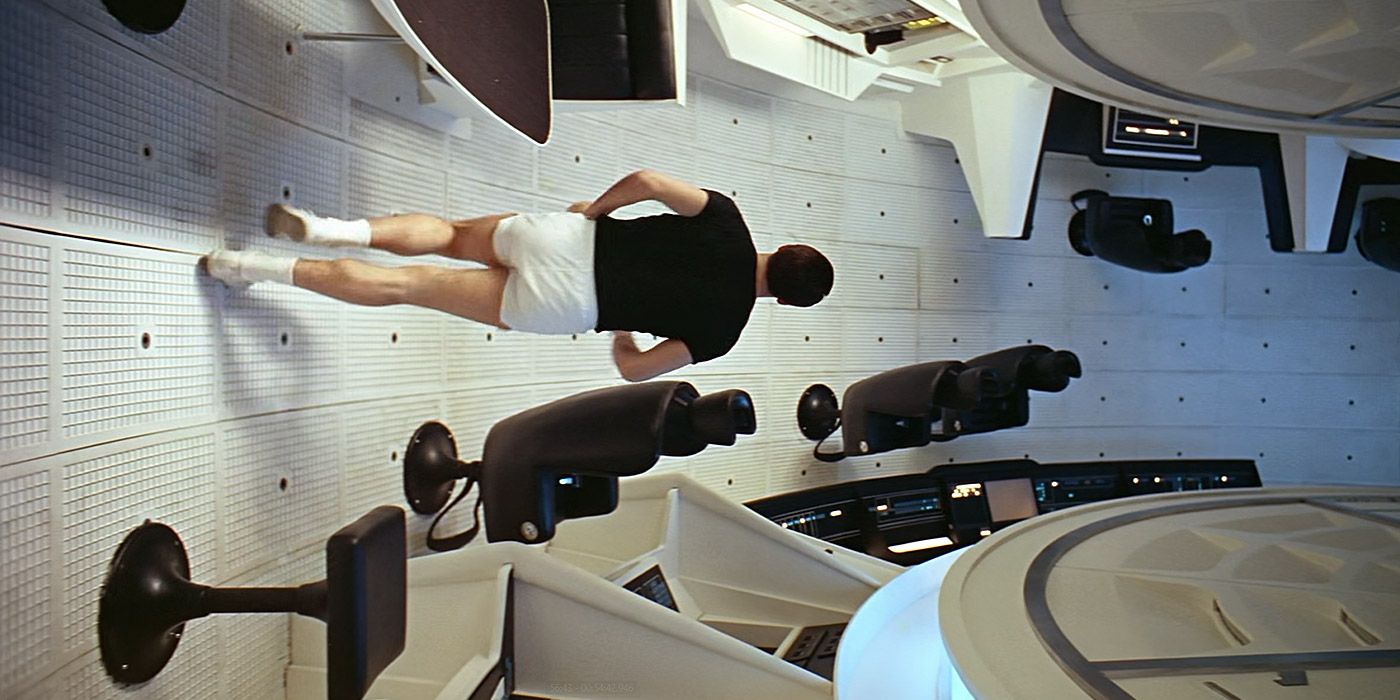
• Available to stream on HBO Max
CGI simply did not exist in 1968, but filmmakers were experimenting with a lot of optical special effects at the time. Still, the best effects were achieved through rather ingenious, and inventive means. Stanley Kubrick wanted to do something special in 2001: A Space Odyssey for the scene where David appears to be jogging through a circular ship module.
The effect was achieved by creating a gigantic rotating set that made it appear as if David was actually moving forward. In reality, he was simply jogging in place while the actual set turned on its axis. Future filmmakers like Christopher Nolan would adopt this technique for films like Inception.
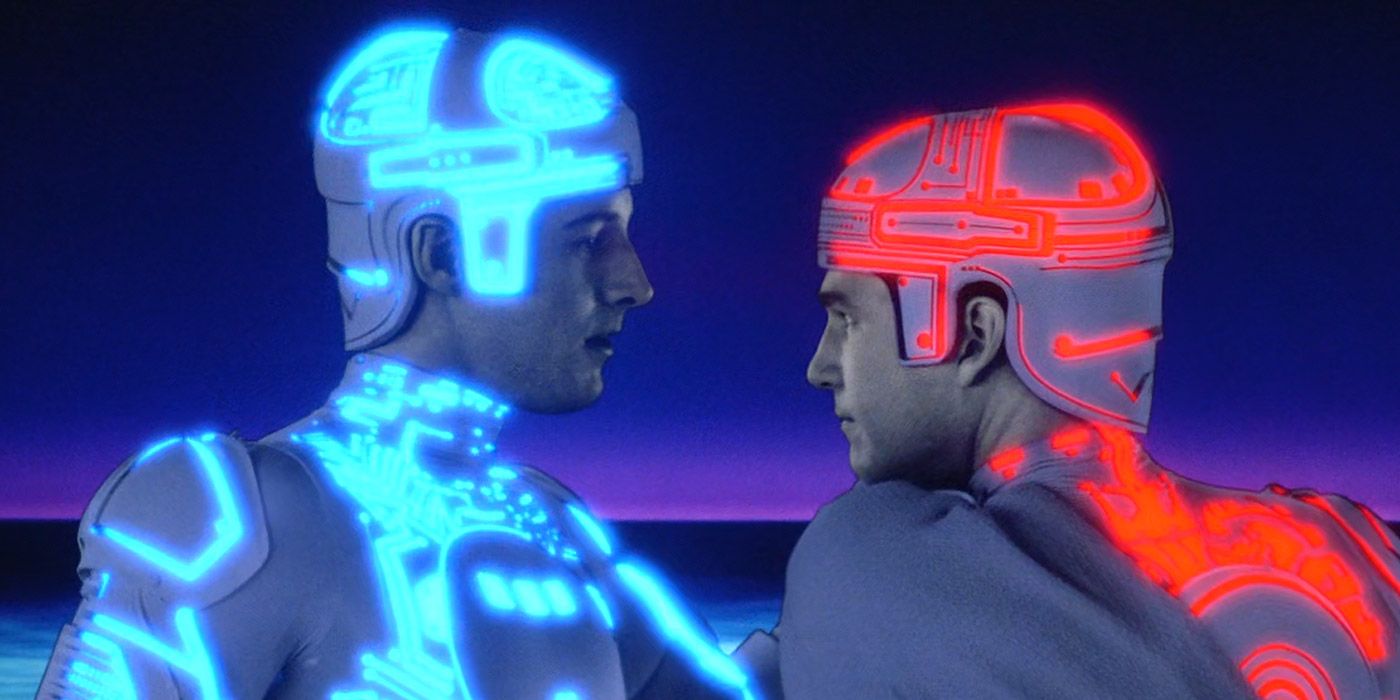
• Available to stream on Disney+
Even though the original TRON is one of the first movies to successfully use computer animation, most of the effects were accomplished through a process called backlit animation. To accomplish this technique, scenes were filmed in black and white on an entirely black set, printed on high-contrast film, and then each cell was hand-painted in post-production. It became one of the defining visual effects successes of the 1980s.
Once the film was printed, each frame was enlarged using a rotoscoping machine. The crew then had to make the film transparent so they could isolate different parts of the image, such as the costumes or faces. Then they had to animate each element individually, and then put it all back together. When it was all said and done, the crew ended up animating around 108,000 individual cells. Needless to say, the process of back-lit animation was never used for another feature film.
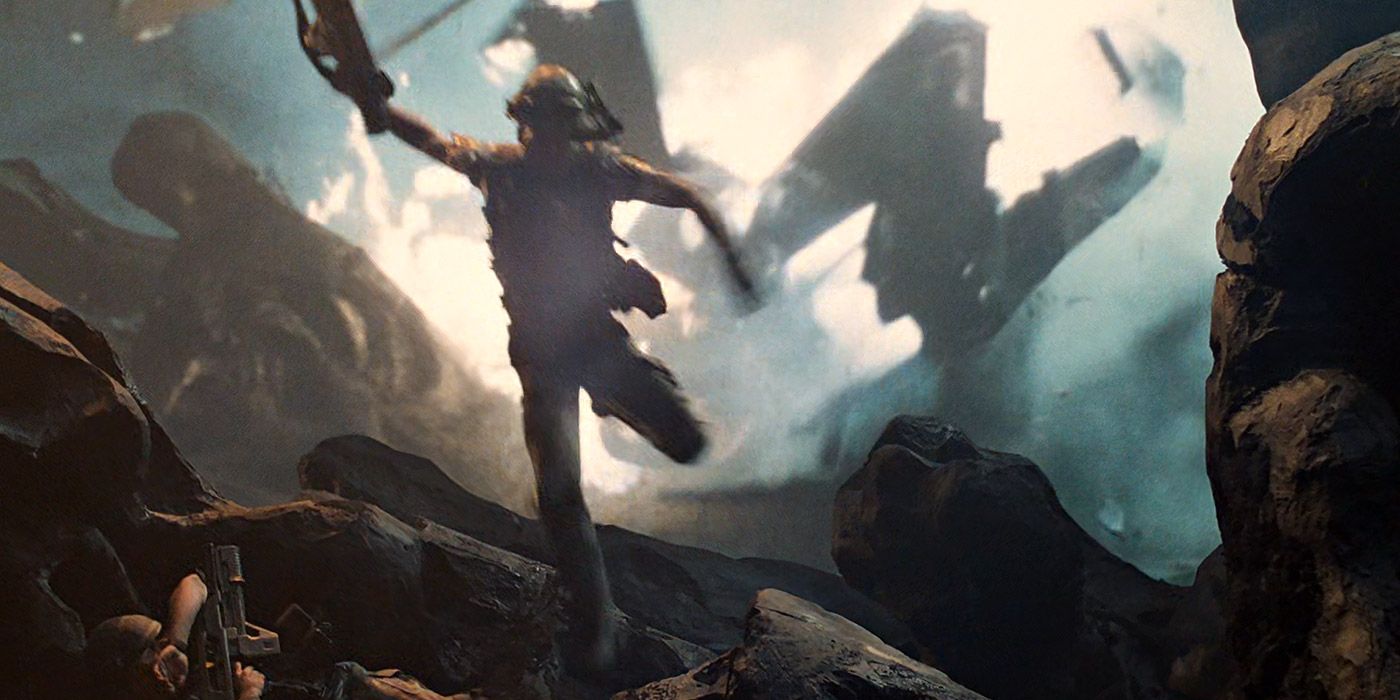
• Available to stream on Fubo
Long before he became a CGI pioneer in his own right, director James Cameron was forced to get clever with a variety of guerrilla-style filmmaking techniques inspired by his time working with Roger Corman. One of the most reliable of his 1980s visual tricks was the use of rear projection units.
First used in the original Terminator film, Cameron later ported the technique over to his massive sci-fi hit Aliens. When the marine dropship comes crashing down on the surface of LV-426, it barrel-rolls towards the main characters. The technique was achieved by filming the explosion with a model, then adding a projection screen on set to simulate the ship hurtling forward.
from ScreenRant - Feed https://ift.tt/2Y9aPHQ

0 Comments